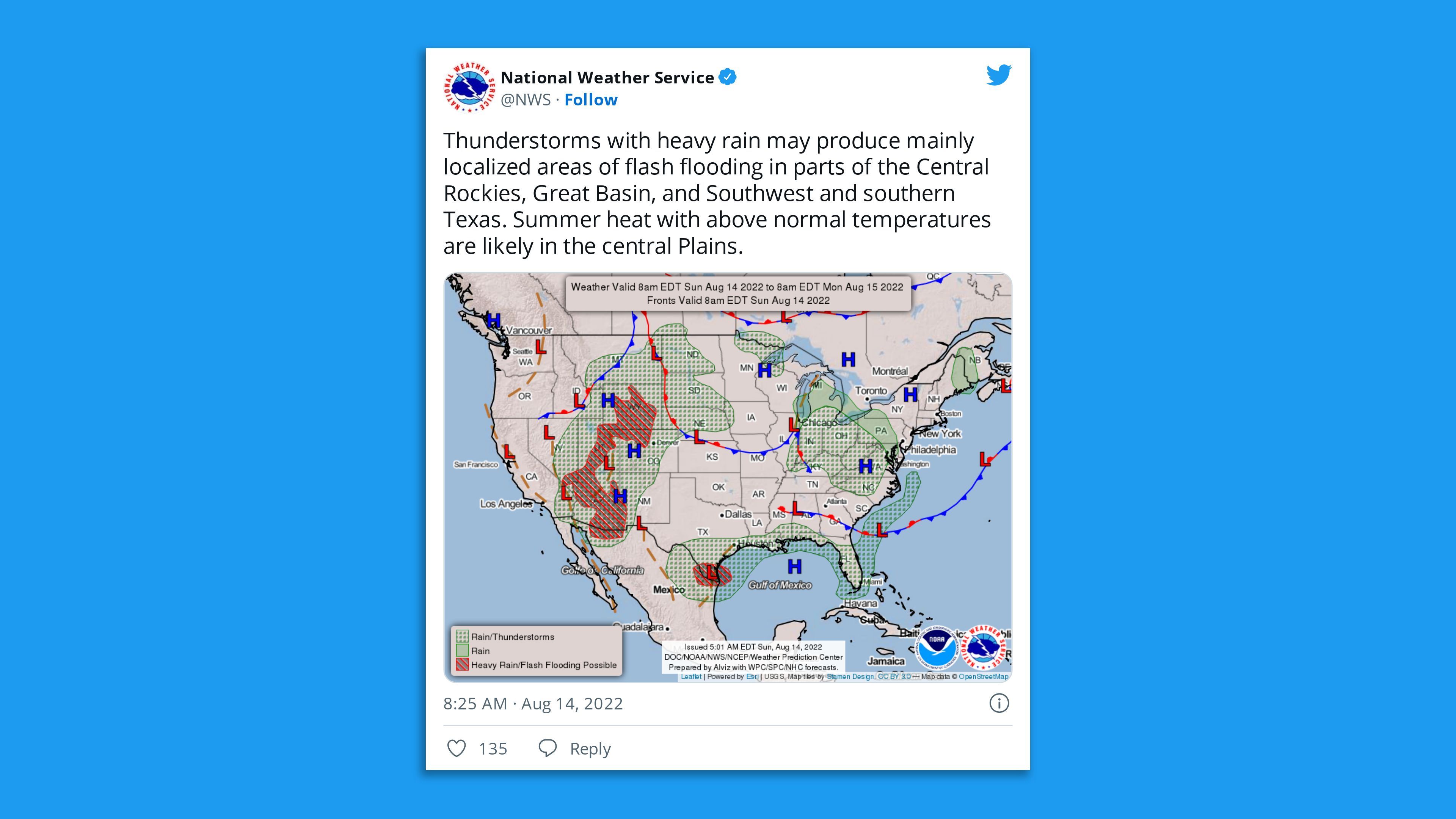Officials warn a forecast downpour that has some 7 million people on flood watch won't be enough to stave off the need for drastic water cuts as the Colorado River's depleted reservoirs sink to near-crisis levels.
Driving the news: As the National Weather Service issued a flood watch for an area covering from Arizona to Wyoming, the U.S. Bureau of Reclamation has given Western states that rely on the Colorado River Basin for water supplies until Tuesday to outline how they plan to make cuts.

Why it matters: If authorities in the affected states of California, Arizona and Nevada in the Lower Basin and Colorado, New Mexico, Wyoming and Utah in the Upper Basin fail to come up with their own agreement by then, the Interior Department will step in.
- Bureau of Reclamation chief Camille Calimlim Touton has warned that "immediate action" is needed to avoid a water supply crisis in the region next year.
Yes, but: Negotiations on water cuts among the Colorado River's Lower Basin authorities have yet to produce an agreement.
Our thought bubble: The Southwest continues to benefit from an active monsoon season, which is helping ease short-term drought conditions in New Mexico, parts of Nevada and southern Colorado.
- However, it is not making a dent nor is it expected to, in the long-term, curtail historic drought and water woes in the Colorado River Basin.
Context: The Southwest is mired in its worst drought of at least the past 1,200 years, which studies tie in large part to global warming.
- The megadrought has plunged the nation's two largest reservoirs, Lake Mead and Lake Powell, to historic lows.
By the numbers: Between 2 million acre-feet and 4 million acre-feet of additional conservation is needed just to protect critical levels in 2023, according to Touton.
- Officials believe up to a third of the Colorado River's flows need to be urgently conserved in order to avoid a crisis at Lake Powell, per Politico.
Threat level: "The Colorado River Basin is in the 23rd year of a historic drought. Both Lake Powell and Lake Mead — the two largest reservoirs in the United States — are at historically low levels with a combined storage capacity of 28% of capacity," Touton said at a U.S. Senate hearing in June.
The bottom line: "While Reclamation and its partners have been successful in conserving water in Lake Mead and Colorado River System reservoirs, more needs to be done as the system reaches critically low water levels," Touton told the senators. "The system is at a tipping point."
Go deeper: Colorado River ranked as "most endangered" in the nation







